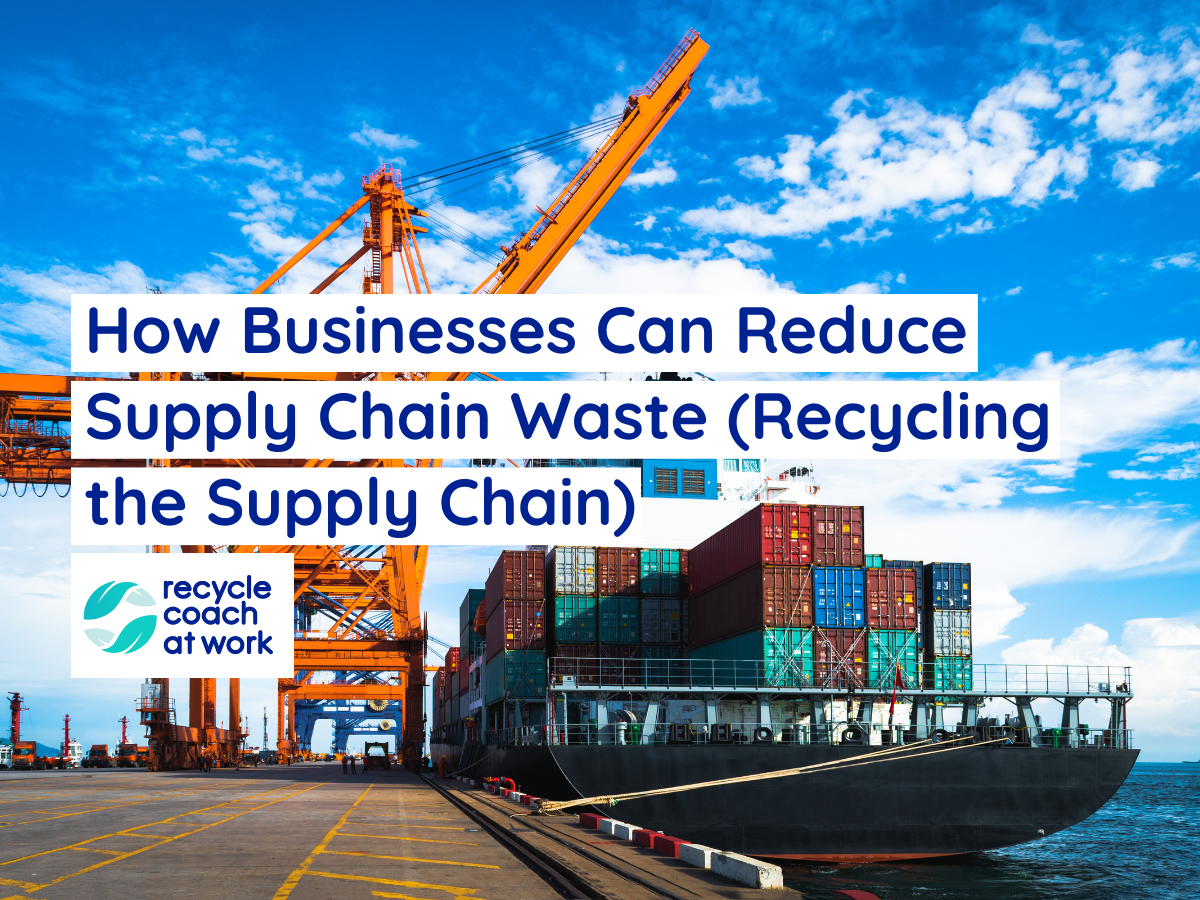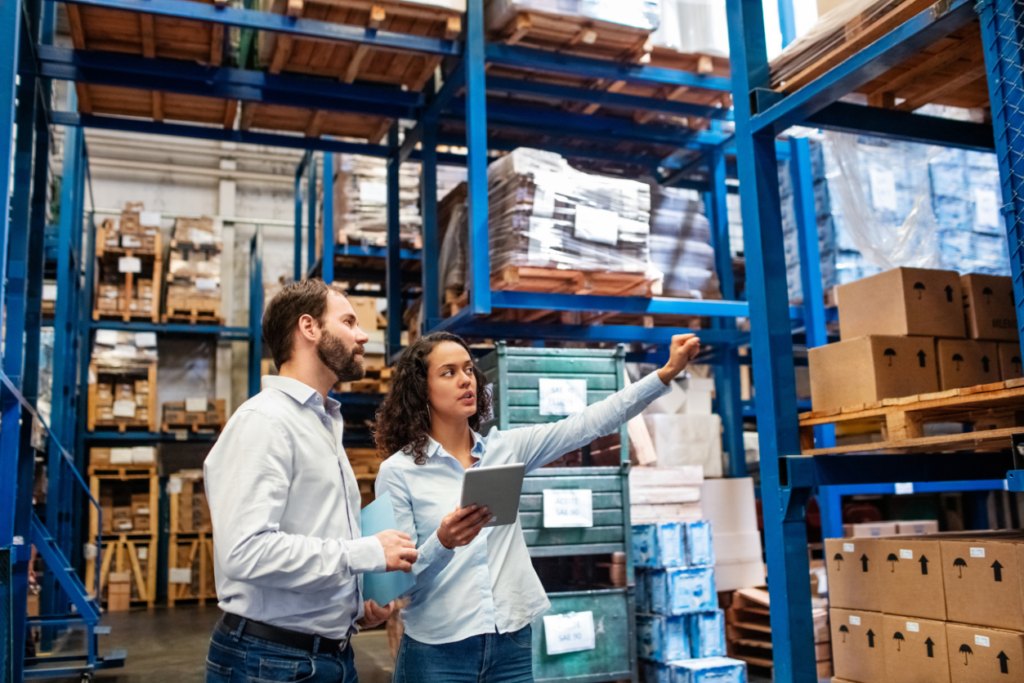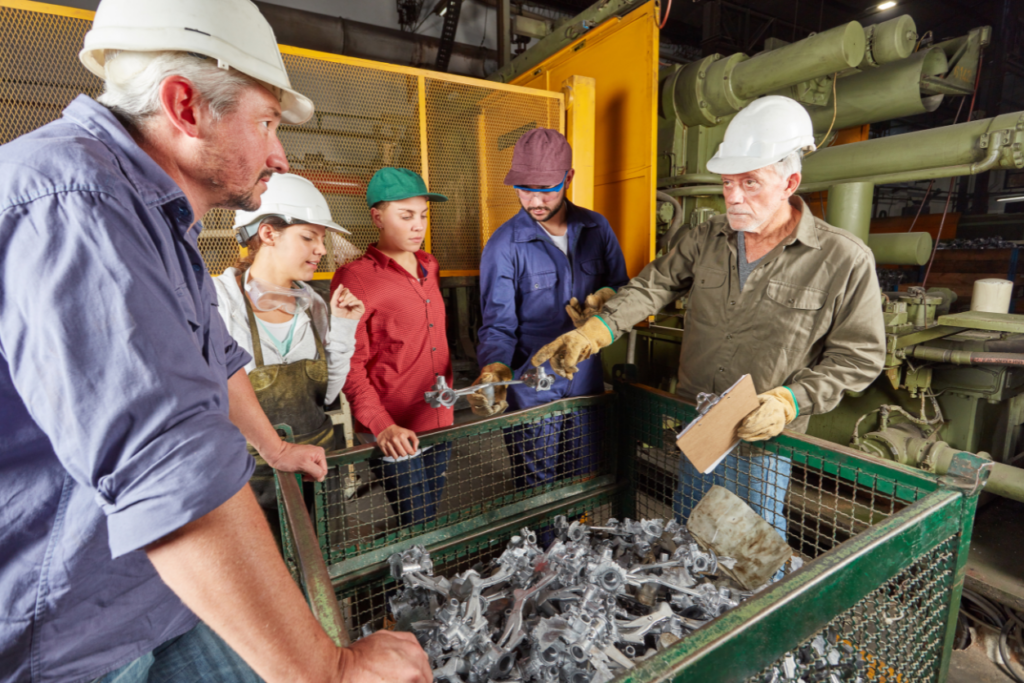How Businesses Can Reduce Supply Chain Waste (Recycling the Supply Chain)

Excess waste isn’t just a hot-button issue nowadays. Individuals and businesses alike need to understand the serious waste problem our country (and the world) is facing. It’s estimated that 7.6 billion tons of industrial waste are produced in the U.S. each year. While there are many ways businesses can reduce waste internally, dealing with supply chain waste is a great place to start.
Global shipping and supply chains are responsible for more waste and unrecycled products than most people realize. Oversupply and damage contribute to $163 billion in inventory tossed out each year and nearly 8% of surplus stock ends up in landfills.
Even though this is a systematic issue, your business can help. Let’s cover a few effective strategies that will make your supply chain efforts more sustainable, so you can reduce the amount of waste associated with your company and do your part to foster a greener future.
Use Technology to Your Advantage

You might not automatically think technology and sustainability go hand-in-hand. However, the tech world has made incredible advancements in recent years that will make it easier for individuals to reduce their personal waste, and for businesses to reduce waste production and learn how to recycle more frequently.
Modern technology, including artificial intelligence (AI), 5G, machine learning, and IoT all play a role in reducing supply chain waste for businesses and corporations. The use of 5G, combined with AI, can help businesses accurately predict when their products will arrive on retail shelves. This helps with inventory management and will reduce waste in manufacturing and sales. It also makes it easier for manufacturers to accurately predict shortages so they can stay ahead of the game.
Using IT trends like automation, you can improve the efficiency of your supply chain and recycling practices. Automation can also make it easier to take control of inventory management. It reduces the risk of human error and will optimize your resources so you’re only using what’s needed, when it’s needed, without over-ordering or manufacturing too much of a single product. Not only will that make the lives of your employees easier, but it can help to reduce supply chain waste in nearly every area of a product journey.
Recycle Your Inventory

In addition to cutting back on overproduction, it’s important to improve your recycling efforts as much as possible so your materials don’t end up in a landfill. Start by looking at your production process to determine which ones are producing the most waste. That will make it easier to figure out how (and where) you can scale back, and which items can be recycled. You’ll also be able to redesign certain processes to make a shift to recyclable materials whenever possible.
When it comes to your current inventory, you can reduce wastage and improve your overstock recycling efforts by:
- Selling overstock at discounted prices;
- Selling to scrap dealers;
- Donating;
- Reworking old inventory into new products;
- Returning to the supplier whenever possible.
It’s not just your products and materials that need to be considered when you’re recycling. E-waste is becoming a bigger problem than ever. While technology can be a great thing for the future of sustainability, the machines used to implement it can create a problem when they become obsolete. Focus on repairing machines whenever possible. If it’s time to get rid of an electronic device, consider taking it to an e-waste recycling center or setting up an e-waste system of your own.
Improve Production Quality

Most manufacturers focus on quality control once a product is fully complete. However, you should be focusing on production quality through every part of the process. Doing so will minimize the wastage of raw materials.
Improving production quality also requires better inventory management. Implementing new systems and using JIT (just-in-time) logistics can make it easier to optimize your orders, so your process can focus on quality over quantity while cutting down on excess use of warehouse space, utility usage, and even transportation needs.
Finally, improving production quality can also help to improve your employee experience. Ask for their feedback as you work on creating a sustainable supply chain effort. They’re the ones dealing with actual production each day, and they likely have the most knowledge of what is being wasted and why. Getting their feedback can make it easier to optimize waste management, improve performance, and reduce the need for so many nonrenewable resources.
Some aspects of the supply chain will always be out of your control. However, if you want to reduce the waste associated with manufacturing, storing, and delivering, keep these suggestions in mind. Use technology to streamline your efforts, cut back on excess waste, and optimize your supply chain. Doing so will help you run as efficiently as possible without relying on too many resources. With a few swaps, changes, and upgrades, you can reduce supply chain waste and promote a more sustainable company culture from within.
Author Bio
Sam Bowman writes about people, sustainability, recycling, and how they merge. He enjoys getting to utilize the internet for the community without actually having to leave his house. He volunteers his time as a local recycling and waste reduction activist, working to help people better navigate proper recycling. In his spare time, he likes running, reading, and combining the two in a run to his local bookstore.